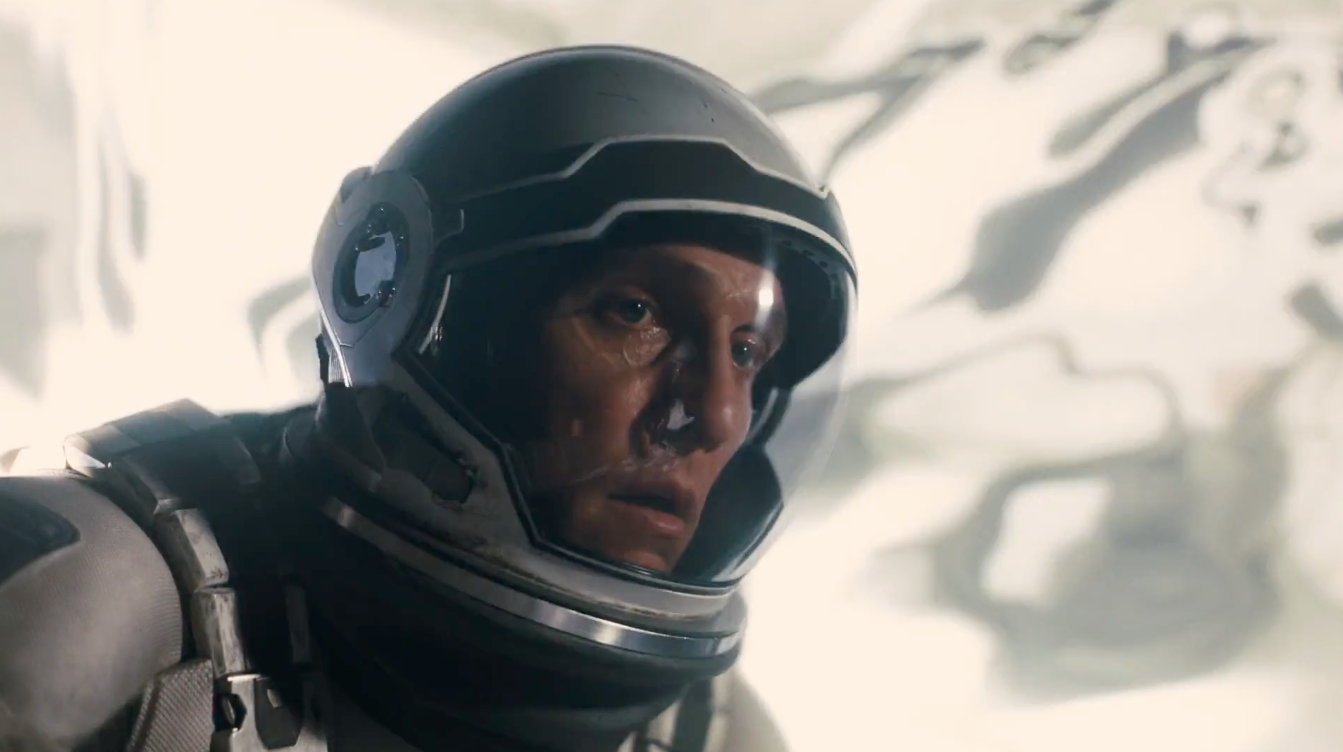Interstellar, directed by Christopher Nolan, is a mesmerizing tale that transcends the boundaries of space and time. Set in a near-future Earth grappling with an agricultural crisis and an impending global famine, the story follows Joseph Cooper (Matthew McConaughey), a former NASA pilot turned farmer. As humanity faces extinction, a mysterious wormhole near Saturn offers a glimmer of hope for survival.

Cooper is recruited to pilot the spacecraft Endurance on a mission to explore potentially habitable planets beyond the wormhole. Accompanied by a team of scientists, including Dr. Amelia Brand (Anne Hathaway), Doyle (Wes Bentley), Romilly (David Gyasi), and two advanced robots, TARS and CASE, the crew sets out on an interstellar journey to find a new home for humankind.
The narrative weaves through the complexities of relativity, time dilation, and the emotional toll of space travel. Interstellar explores the power of love, the resilience of the human spirit, and the profound impact of time on the human experience. As the crew encounters gravitational anomalies, time shifts, and the harsh realities of space, the film unfolds as a poignant exploration of the cosmic tapestry that binds humanity to the universe.
Characters

Interstellar boasts a stellar cast that breathes life into its characters, making them integral to the emotional resonance of the narrative. Matthew McConaughey’s portrayal of Joseph Cooper is a compelling blend of determination and vulnerability. Cooper’s connection with his daughter, Murphy (Jessica Chastain as adult/Mackenzie Foy as child), forms the emotional core of the film, driving his actions and decisions.
Anne Hathaway’s Dr. Amelia Brand brings a mix of idealism and heartache to the mission, while the robotic companions, TARS and CASE, add both humor and depth to the crew dynamics. The ensemble cast delivers nuanced performances, allowing the audience to connect with each character on a personal level.
Interstellar also delves into the impact of time on relationships, particularly the father-daughter bond between Cooper and Murphy. The portrayal of love as a transcendent force, capable of defying the constraints of time and space, elevates the characters from mere astronauts to emotional conduits for the film’s overarching themes.
Interstellar Ending Explained (Spoilers)

Interstellar’s ending is a tapestry of intricate threads that weave together the film’s cosmic journey and emotional undertones. As Cooper sacrifices himself to send crucial data back through the wormhole, he finds himself in a mysterious tesseract—a construct beyond the bounds of space and time.
Within the tesseract, Cooper realizes that he is the “they” who have been manipulating gravity to communicate with Murphy throughout her life. The tesseract is a bridge between dimensions, allowing him to interact with specific moments in Murphy’s past. Through Morse code and gravity, Cooper relays the quantum data needed to solve the gravity equation, enabling humanity to escape Earth’s gravitational pull.
The film concludes with an elderly Murphy, having solved the equation, reunited with an ageless Cooper on a space station near Saturn. The conclusion presents a bittersweet yet hopeful resolution, as humanity has a chance for survival and a new home. The love between Cooper and Murphy, transcending time and space, becomes the driving force that saves humanity.
F.A.Q
a. Is It Based on a True Story? No, Interstellar is not based on a true story. Christopher Nolan and his brother, Jonathan Nolan, crafted the screenplay, drawing inspiration from scientific principles, theoretical physics, and the exploration of space.
b. What Is the Main Idea of the Movie? The main idea of Interstellar revolves around humanity’s quest for survival, the exploration of space as a potential refuge, and the interplay of love and time. The film delves into the transcendental nature of human connection and the enduring spirit that drives us to reach beyond the stars.
c. Is this Movie Worth Watching? Absolutely. Interstellar is a cinematic masterpiece that combines breathtaking visuals, a thought-provoking narrative, and powerful performances. Its exploration of cosmic wonders, coupled with emotional depth, makes it a must-watch for those seeking a captivating and introspective cinematic experience.
d. What Is the Symbolism in This Movie? Symbolism in Interstellar is rich and varied. The wormhole symbolizes hope and opportunity, the tesseract represents the transcendent nature of love, and the constant theme of gravity serves as a metaphor for the unseen forces that connect individuals across time and space. The film’s cornfield setting also symbolizes the fragility of Earth’s ecosystems and the urgency of finding alternative habitats.
In conclusion, Interstellar stands as a testament to Christopher Nolan’s ability to blend science, emotion, and storytelling into a cinematic journey that resonates on both intellectual and visceral levels. Its grandeur, philosophical depth, and exploration of the cosmic unknown make it a timeless piece of cinematic art.

